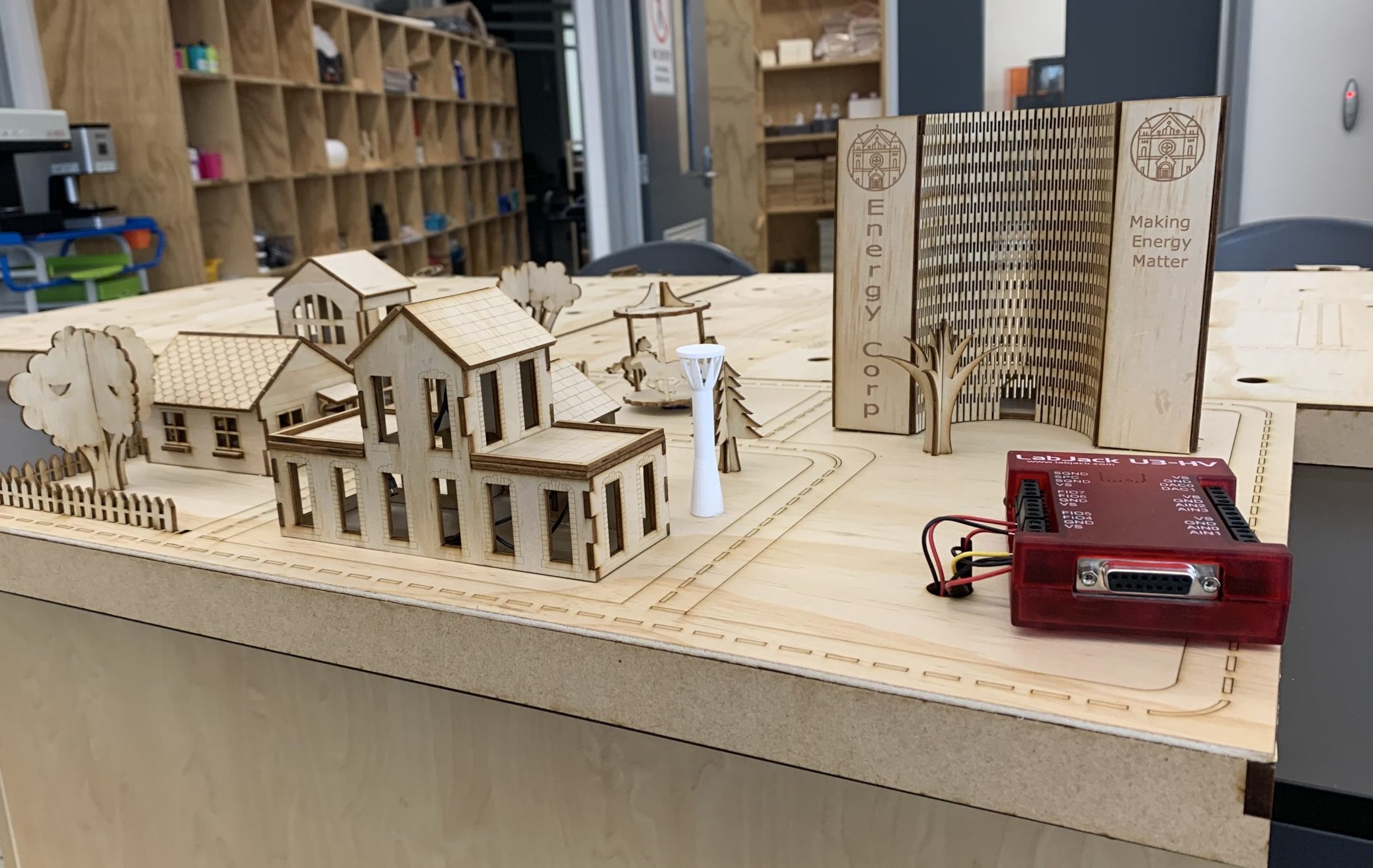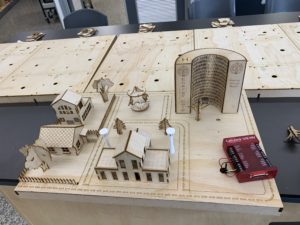Building a Renewable Energy City
by Dr Catriona Nguyen-Robertson MRSV, with Mr. Paul Boys and Dr Warren Stannard of the Gippsland Tech School
This piece appears in the April 2023 edition of Science Victoria magazine. All issues can be read online for free at rsv.org.au/Science-Victoria.

The burning of fossil fuels releases large amounts of carbon dioxide, and this greenhouse gas traps heat in our atmosphere. According to the International Energy Agency, coal is the ‘dirtiest’ fossil fuel, and has contributed over 0.3°C of the 1°C increase in global average temperatures above pre-industrial levels, making it the single largest source of global temperature rise1.
The Intergovernmental Panel on Climate Change (IPCC) warns that warming above 1.5°C risks further sea level rise, extreme weather events, loss of biodiversity, food scarcity, and worsening health and poverty worldwide2.
There is worldwide pressure to reduce carbon emissions and move towards a greener future. In 2020, Victoria still relied on coal for 69% of all electricity generation3, however the Victorian government has set a target of 40% renewable energy production by 2025 and 60% by 20304. In contrast, countries like Scotland, Iceland, Costa Rica, and Uruguay have already achieved over 90%5. Australia, the sunburnt country, has plenty of sunshine, as well as an abundance of wind and land. If we harness these resources, we could be leading the charge in renewables.
Over the course of two days, secondary school students can rise to the challenge of powering an entire city with renewable energy in a program that has been run by the Gippsland Tech School for several years.
As part of the program, students are challenged to draft a proposal for how they might convert a city to run solely on renewable energy. The goal is to have the entire city – homes, streetlights, public utilities, etc. – powered by renewables like hydrogen, solar, and wind energy.
Students have to keep in mind that the city will always require power: night or day, rain or shine. Like most places, Gippsland’s Latrobe Valley experiences changes in the amount of sunlight that reaches it, and the wind frequently changes direction and velocity. The students are introduced to the science of renewable energy sources, and discuss the advantages and disadvantages of each to ensure that the city has enough backup power for when the sun is not shining or the wind is not blowing.

Working with models, students conduct experiments around each energy type. They test the energy output of solar panels, adjust wind turbine blades to harness optimal amounts of wind, and make group decisions on how to power the city based on their data. The students investigate ways of storing any excess renewable energy so that there is enough available at any given time.
Another renewable energy source that students explore is the production of hydrogen and the use of a hydrogen fuel cell. Hydrogen gas has the largest energy content of any fuel type, and its stability allows for longer-term storage, making it ideal for energy storage and distribution. Students learn that hydrogen fuel cells are a good way to store excess energy for when it is needed, but this energy must first be generated some other way. They are given a budget to work with and decide on how they might use a single power source or use multiple together, so that their city can generate enough energy while staying within budget.
On the second day of the program, students plan, design, build, and test a city powered completely by renewable energy. They use 3D-design and laser cut cardboard to build a model city fitted with lights that are connected to their power source(s) of choice. Finally, students present their simulated city powered by renewable energy to an industry member from the energy sector for feedback.
This is project is particularly topical as the chimneys of the defunct, brown coal-fired Hazelwood power station were demolished on the 25th of May 2020. The chimneys operated for more than half a century before Hazelwood was shut down in March 2017. For some time, this power station was producing up to 25% of Victoria’s electricity.
Now the Latrobe Valley is home to a world-first hydrogen project: the Hydrogen Energy Supply Chain at the AGL Loy Yang Complex. Hydrogen gas has been successfully produced in a pilot phase and the facility is now in a care and maintenance phase. Hydrogen gas can be produced from Loy Yang coal mine by reacting hydrogen with oxygen under high pressures and temperatures to form synthesis gas (syngas). This syngas consists primarily of hydrogen and carbon monoxide, and is later converted to carbon dioxide and additional hydrogen. Moving forward, this may be a cleaner way to use our brown coal – so long as the carbon dioxide that is produced is captured and reused or sequestered, and not released into the atmosphere.
Working in close partnership with local energy providers, the Gippsland Tech School has offered students the chance to put themselves in the shoes of machinery operators, electricians, architects, product testers and designers. Additionally, the Tech School is now looking at expanding the program with new partners in the energy sector.
By rapidly prototyping and building model cities that run solely on renewable energy, students are encouraged to think about the cities of the future. They also work collaboratively to develop solutions that we, as a community, need now.
—
References:
- International Energy Agency (IEA), ‘Global Energy & CO2 Status Report 2019’, 2019, https://www.iea.org/reports/global-energy-co2-status-report-2019
- The Intergovernmental Panel on Climate Change (IPCC), ‘Global Warming of 1.5°C’, 2018, https://www.ipcc.ch/sr15/
- Department of Environment, Land, Water and Planning, ‘Victorian Greenhouse Gas Emissions Report 2020’, 2020 https://www.climatechange.vic.gov.au/__data/assets/pdf_file/0036/598257/Victorian-Greenhouse-Gas-Emissions-Report-2020.pdf
- Department of Environment, Land, Water and Planning, ‘Victorian renewable energy and storage targets’, accessed on 18/03/23 https://www.energy.vic.gov.au/renewable-energy/victorian-renewable-energy-and-storage-targets
- Climate Council, ’11 countries leading the charge on renewable energy’, 15 August 2022 https://www.climatecouncil.org.au/11-countries-leading-the-charge-on-renewable-energy/








